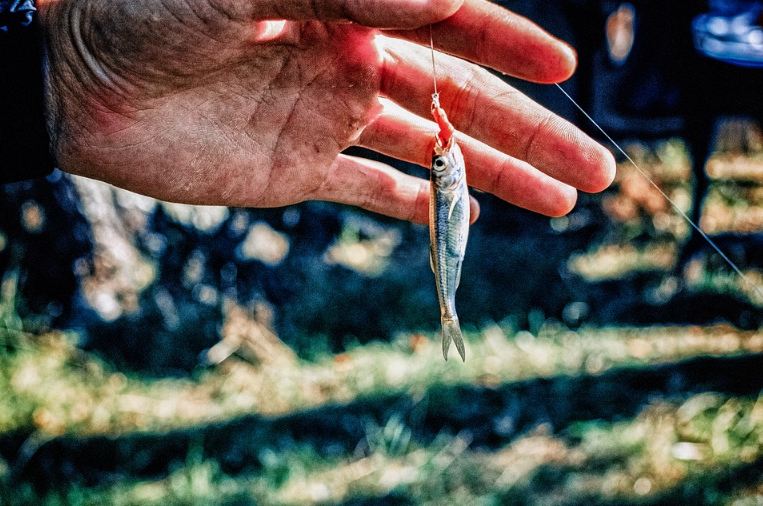Fish are a good source of protein and other nutrients, which can be a really helpful food in a survival situation. Even without a catastrophe, knowing how to bass fish, or catch a fish for dinner can be a good thing for the budget. But what happens if, while standing at the river with a pole, there is no hook on the end of the string? It can be difficult (but not impossible) to catch a fish without a hook.
There is no need to despair! There are several ways to make efficient fishhooks from items that may be more readily available.
1. Can Tab
One of the most common modern-day alternatives for fishing hooks, the can tab fishhook can be made from trash that is generally easy to find. Sadly, beer cans and cans from carbonated beverages are often discarded anywhere the drinker chooses, rather than being properly deposited into a waste receptacle. While litter is a bad thing, something good can be made from these.
Pop off the tab and make a cut through one end (generally the end that was not attached to the can) at a steep angle to form the hook. Use the loop at the other end to tie to the fishing line. Before attaching, however, take the time to use a rough rock to file down the hook end to a sharp point and to smooth the edges of the loop side to keep it from cutting the line.
2. Safety Pin
Many people have safety pins as a staple in first aid kits and clothing repair kits. There is little adjustment necessary to form one of these into a serviceable hook. Open the pin. Bend the pointed end near the loop and again near its tip to make it look like a hook. Tie string on the top end – where the pointed end usually rests when closed – and add bait to the pointed part.
3. Stick (Gorge Hook)
This is a device that has been used by survivalists for decades. It is not technically a hook, as it is a length of stick that has had the bark stripped off with one or both ends sharpened and a slight notch in the center (or the non-sharpened end) to hold the string. This can be nearly any length and width, as long as it will fit into a fish. It is baited to hold the stick parallel with the string, and when the bait is taken, after several seconds for the fish to swallow, the string is pulled to cause the gorge hook to turn, lodging in the fish. Tension must be maintained to prevent the stick from turning again and slipping out.
This type of fishing device can be made from other materials, as well, such as bone.
4. Thorn
Thorns are already at an angle to the stem on which they grow. Cutting a length of the stem or branch with a thorn on it, cutting just below the thorn and leaving some room above to tie string to it, will provide a simple hook for catching small fish. These may not bring in fish large enough to eat, but they can, and fish that are too small can be used to bait larger hooks.
5. Wishbone, jawbone, or other bones
Because the wishbone of pretty much every animal and bird is already shaped like a hook, it can be the easiest to convert into a fishhook. Keep in mind that bones, while strong, tend to be a bit weaker than wood or metal, so the hook will likely need to be a bit thicker to keep from breaking under pressure. Upper jawbones, especially of deer or rabbits, also have a hook shape that can be sharpened into a nice hook. Any bone large enough can be carved into a hook, however, if one has the tools and the time.
6. Wood
If an actual hook shape is preferred, this, too, can be made from sticks using sharpened sticks and twine or fishing line to bind them together. Cut an angle on each stick and tie them to create a V shape. Adding bait to this hook will result in a fishhook nearly as effective as a purchased hook.
7. Zipper
Like the can tab, the zipper pull tab can also be cut and sharpened and the other end tied to a string to create a makeshift fishing hook.
While these makeshift hooks are good to know, it is obviously easier to use premade hooks. Consider adding some of these options to the survival gear in storage.
